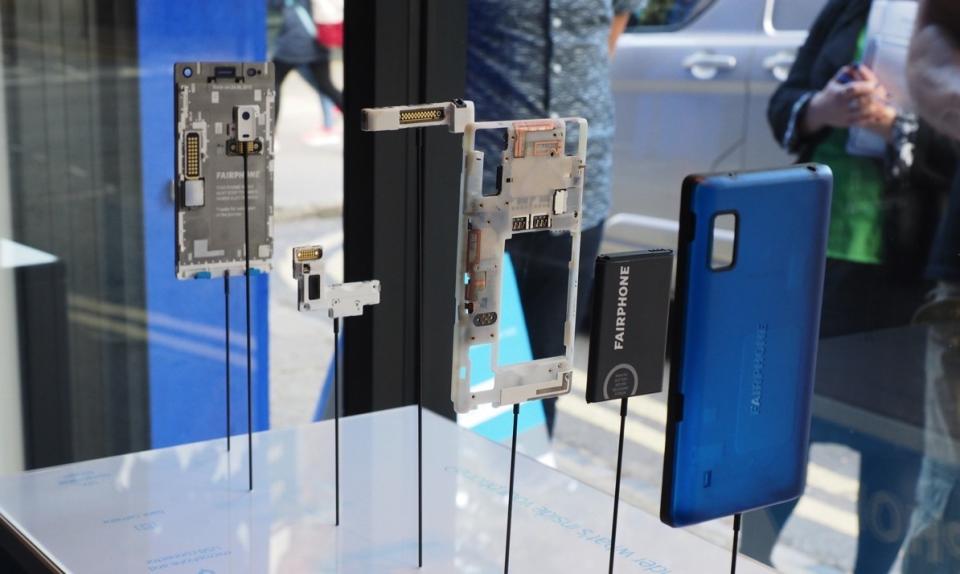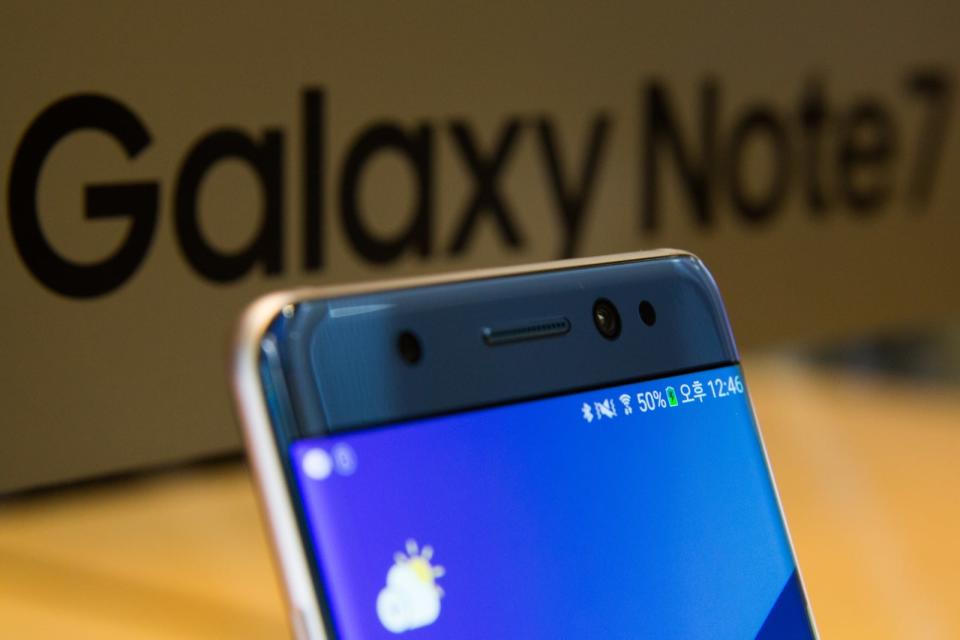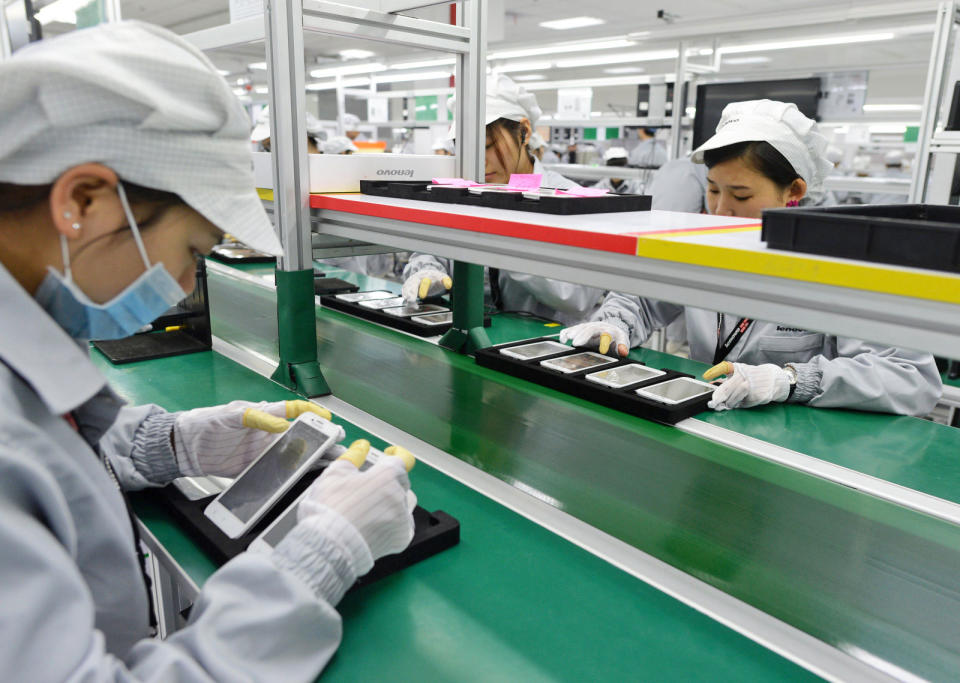You can’t buy an ethical smartphone today
Conscious consumption is hard to apply to consumer electronics.
Any ethical, non-🍏 📱 recommendations?
It all started with a WhatsApp message from my friend, an environmental campaigner who runs a large government sustainability project. She's the most ethical person I know and has always worked hard to push me, and others, into making a more positive impact on the world. Always ahead of the curve, she steered me clear of products containing palm oil, as well as carbon-intensive manufacturing and sweatshop labor.
That day, she wanted my opinion on what smartphone she should buy, but this time requested an ethical device. Until now, she's been an HTC loyalist, but wanted to explore the options for something better and more respectable. My default response was the Fairphone 2, which is produced in small quantities by a Dutch startup, but I began to wonder -- that can't be the only phone you can buy with a clear conscience, can it?
My friend explained she wanted to trust that companies are "not being dicks in relation to materials, processes, supply chain, working standards and the ability to repair." "Most people aren't supply-chain experts, so there'll be all sorts of impacts we're not in a position to know about." Her approach generally follows the tenets of ethical consumerism, the practice of buying products which are "ethically produced, and / or not harmful to the environment, or society."
"[Smartphones have] so many components from different countries, which all have their own challenges regarding fairness."
By voting with your wallet, it's thought that consumers can affect systemic improvement by shopping with companies that do the right thing. Throughout the 1990s, companies like Nike were at the center of a movement tasked with reducing sweatshop labor in the fashion industry.
Critics of the practice point out that, even decades later, labor abuses still occur at Nike factories, and its former CEO has used his fortune to fight political causes designed to improve people's quality of life. Either way, it's hard to buy ethically because there are so many issues to take into account when buying any product.
Ensuring your food or clothes are ethical is difficult, but nothing compared to consumer electronics. "It's one of the most globalized products you can imagine." Fabian Huhne is Fairphone's public engagement manager and press officer. "[Smartphones have] so many components from different countries, which all have their own challenges regarding fairness."
Devices vary, but your average smartphone may use more than 60 different metals. Many of them are rare earth metals, so-called because they're available in smaller quantities than many other metals, if not genuinely rare.
Often, these substances are found in conflict zones, such as the Democratic Republic of Congo. Both there and in the surrounding region, the proceeds from mining, which often uses child and/or slave labor, have been used to finance its brutal civil war. Since 2014, the US Dodd-Frank Act has stipulated that a company must disclose if its products use materials from conflict zones.
Greenpeace's Gary Cook, who analyzes the IT sector for the NGO, agrees that supply chains are spectacularly complex. He's also seen that some companies are "recognizing they have to start taking control of their supply chain." This may have been prompted by press coverage, such as the recent revelations from Apple supplier Catcher Technology, and that when such stories break, they have "brand implications" which can harm a company's brand and reputation.

Labor issues are often at the heart of the most controversial stories concerning the technology industry. In January, Bloomberg exposed working conditions at the Catcher Technology Company factory in China, which makes iPhone casings. It revealed that some workers had to stand for 10 hours a day in a noxious, potentially toxic, environment without proper safety equipment.
This also included some laborers working without earplugs in rooms where the noise levels reached 80 decibels. Employees operating machines where coolant and metallic particles were flying reportedly lacked access to goggles. Even worse, the workers had to sleep in unclean dormitories that lacked hot water and basic washing facilities.
Apple denied the charges, telling Bloomberg that it had not found evidence of improper practices, but that it would also send an additional team of auditors to examine the complex for violations. An unnamed spokesperson said the company "remains dedicated to doing all [it] can to protect the workers in [its] supply chain." It's not the first (second, or third) time that Apple has been singled out with coverage of labor practices in its supply chain. In 2010, a spate of suicides at Foxconn / Hon Hai Precision Industry -- Apple's key manufacturing partner -- received international attention.
At the end of last year, Foxconn was accused of illegally employing 17-to-19-year-old students to work overtime to help build the iPhone X. The interns said they were made to work an 11-hour day assembling the flagship device, in violation of Chinese law. Subsequently, Apple and Foxconn admitted to Reuters that a number of students had worked overtime but said that it was voluntary. The iPhone maker sent additional employees to deal with the fallout and ensure rules were being followed and affirmed its commitment to protect its workers.
Apple, with its high profits and strong brand, is often the easiest target for ethics campaigners, but its labor practices are hardly unique. Foxconn, the supplier associated with all these issues, is used as a contract manufacturer by Sony, Nintendo, Amazon, Toshiba, Motorola, Huawei, Dell, HP, Acer, BlackBerry and many more.
If you thought that Samsung may be a better choice, think again. Back in 2016, the company was accused of poisoning its own workers. Around 200 employees have either died or been stricken with serious illness after working on a Samsung production line. These individuals were diagnosed with leukemia, lymphoma and MS, despite being in their late 20s or early 30s. Samsung has denied the accusations, telling BBC News that the safety of its workers is its highest priority, but the company has since allowed inspectors inside its facilities. In addition, one of the employees who passed away was awarded compensation by a South Korean appeals court.
China Labor Watch, a non-profit that examines working conditions, has also found instances of child labor on Samsung lines. In 2012, a supplier was found employing children as young as 14 -- who had their pay docked when they were unable to work due to an injury. The company has since outlined a code of conduct for its supplier responsibility practices, which includes a commitment to banning child labor, paying a minimum wage and a ban on inhumane treatment. In 2015, China Labor Watch was still finding failings in facilities used by Samsung to produce its devices.
If you're on the hunt for a smartphone that isn't produced with the sort of intensive labor that most of us would wince at, chances are you're not going to be satisfied. Even smaller companies, like Fairphone, with its public commitment to offering a better deal, struggle with the systemic problems of the industry. Its handset is manufactured in Shenzhen, but as Huhne explains, "if you want to change the industry, you have to go where it is." He says suppliers are often surprised when Fairphone reps ask how they could improve working conditions in partnership.

The work of NGOs like Greenpeace, China Labor Watch and others are, in Huhne's mind, "essential." He feels it's important for companies to work with them, since they're already "on the ground" in some of these crucial regions. There's also the issue of where any organization chooses to focus its priorities: What's more important, conflict materials, sustainability or labor issues? "Just looking at how complex and vast international supply chains are, we had to make a decision on where to focus first."
Smartphones, and consumer technology more generally, don't just have the potential to harm the people building them. There is also the enormous environmental damage caused in the handsets' production, through resource extraction, intensive manufacturing and transport. "If you're wanting to buy a[n ethical] phone right now, your choices are limited," says Greenpeace's Gary Cook, "and Fairphone has done the most in terms of current manufacturers."
The organization found there's plenty of environmental blood that can be laid at the door of the smartphone. In the last decade, production of the devices has consumed nearly 968TWh, enough to power India for a year. In 2017, smartphones, and related products, made 50 metric tons of e-waste -- discarded smart devices and their accessories -- and it's only going to get worse.
Recently, Greenpeace launched a campaign to expose Samsung's use of coal-fired power plants. The organization believes that the company, "despite all its PR talk," only uses one percent renewable energy. It's a comparison that makes Apple seem positively virtuous, given its longstanding commitment to reach 100 percent renewables.
The NGO also took Samsung to task in the wake of the Galaxy Note 7 crisis, in which faulty batteries caused the devices to explode. If the Note 7 hadn't been built as a wholly-integrated device, but instead came with removable batteries, the cost to resolve the problem would have been significantly smaller. Integrated batteries are often the part that fails first, prompting phone users to opt for an upgrade when a replacement would work just as well. Failure to address this is a lesson that Apple is learning right now, to its chagrin.
Repairability and modularity can help users increase a device's lifespan, save money and preserve precious resources. But it's not easy to do, and often people ditch a perfectly-functional phone because of a single failing component. Not to mention that it plays into the gripes surrounding "planned obsolescence," and the theory that companies deliberately build devices that break after two years.
Mark Schaffer formerly managed environmental programs at Dell. He was responsible for pushing the company to adopt EPEAT (Electronic Product Environmental Assessment Tool) standards. Now, he runs an independent consultancy, Shaffer Environmental, and last year, penned a report on environmental standards for Repair.org. Schaffer believes that US electronics standards, which are meant to push manufacturers to do better, have now failed.

"Standards of the past have pushed manufacturers toward more recycled plastics, fewer hazardous materials, smarter end-of-life management and better energy efficiency," he says. But these days, the power and influence of these companies mean that they can "effectively resist leadership standards." He believes that targets are now "too easy for manufacturers to achieve," making them meaningless. Greenpeace's Gary Cook agrees, saying the situation is "not as progressive as it once was."
Meanwhile, there's iFixit, which publishes a chart of smartphones ranked by their repairability. Unsurprisingly, Fairphone 2 tops the list, and sadly the rest of the top five is filled out with older devices, like Motorola's Droid Bionic and Atrix 4G (both 2011). The current run of flagship devices from from Google (6/10), Apple (6/10) and Samsung (4/10) demonstrate somewhat less commitment to repairability.
Schaffer points out that while many advances in sustainability have been made, new devices often feature "difficult to recycle batteries [and] non-upgradeable storage." More worryingly is the presence of those rare earth metals that "are virtually impossible to recover in the current electronics recycling infrastructure." One solution would be to push for increased repairability and better durability for the latest devices. But, as the Schaffer report says, manufacturers have "consistently opposed stronger reuse and repair criteria," although we couldn't possibly wonder why.
"Glue is the cheap, lazy way to make a thin device with a seamless exterior," explains iFixit's lead teardown engineer, Samantha Lionheart. Glue is the enemy of repairability, but it does help companies make slim, unibody and waterproof devices en masse. In addition, Lionheart says that "the advent of wireless charging" means "there are a lot of glass backs that can only really be attached with an adhesive." Lionheart cites the LG G5 as evidence that there are better ways to do things, since it uses a "stiffer battery case to enable easy removal and provide structural support." But, "ultimately, manufacturers don't often take repair or rework into consideration, sometimes to their massive detriment -- like the Note 7."
EPEAT, a green electronics standard based on the IEEE 1680 framework, helped supercharge environmental standards back in 2006. EPEAT grades consumer electronic products against 1680, awarding a bronze, silver and gold ranking. The regime includes mandates on recycled plastic, manufacturer recycling programs and a reduction on the use of hazardous materials. The latter category has helped drive down the use of poisonous substances like lead, cadmium and mercury in countless consumer devices.
But Schaffer's report is critical of EPEAT's leadership role, citing the moment when Apple released the 2012 MacBook Pro with Retina Display as its death-knell. The laptop shipped with a variety of non-upgradeable parts, a glued-in battery and a proprietary non-user-replaceable SSD. Despite this, the device was awarded gold certification, and in Schaffer's eyes "effectively gutted the modularity criteria in the standard."
Perhaps surprisingly, Nancy Gillis, CEO of the Green Electronics Council -- which administers the EPEAT label -- agrees that things need to change. She says the Schaffer report helped crystallize internal discussions over reform. Part of this is because EPEAT's success is bound up with IEEE 1680, giving its administrators less wiggle-room to make judgment calls.

Gillis, who took up her leadership position at the GEC in 2016 believes that the issue, right now, is with standards development itself. It can take the better part of a decade to produce a new standard, and it's a laborious process of negotiation between the industry, its regulators and relevant stakeholders. "Because these standards-development processes are taking four, five, six years," she explains that some smaller stakeholders "don't have the financial wherewithal to continue." Specifically, smaller IT companies, security experts and environmental advisors who lack the time and resources to remain involved. Gillis believes that this results in the standards' development becoming unbalanced in favor of larger manufacturers.
It seems that big manufacturers have carte blanche to define their devices as environmentally friendly. Not only do they set the bar, but they know just how to slide their products through without causing any controversy. But that may not be the situation forever. The GEC is pushing for a much faster standards-development process, one that will take no longer than 22 months. Crucially, however, the new standards will, for the first time, "address the environmental and social impact associated with that product category."
Other industries, from paper products (FSC) through to food (Fairtrade) have already adopted labeling schemes that inform consumers about making better choices. Each one can only be used if the company involved meets certain criteria concerning ethics, sustainability, minimum pricing and workers' rights. In Germany, there's even a general-purpose eco label (Der Blaue Engel), which covers any product deemed to be friendly to the environment.
"You have working conditions, you have environmental issues, you have problems with recycling," says Fairphone's Huhne, "it's very difficult for a single label to capture that." Greenpeace's Gary Cook is also sceptical about the need for labels, saying that "we don't have time to go through a process of 'let's create an eco label that says this product is climate-friendly." The GEC's Gillis disagrees saying that "complexity of the supply chain is challenging, but the complexity of addressing environmental aspects was challenging, too."
Right now, it's impossible to buy a smartphone you can be certain was produced entirely ethically. Any label on the packaging wouldn't stand a chance of explaining the litany of factors that go into its construction. The problem is bigger than one company, NGO or trade policy, and will require everyone's effort to make things better.
"Fairphone isn't 100 percent fair," says Fabian Huhne, "and we can't solve everything at the same time." But he's optimistic: "If the industry moves in [a more positive] direction, it's going to get a lot easier," but it requires "transparency and knowledge." Armed with that, hopefully consumers in the future can pressure the industry to get ever closer to the ideal.
The Green Electronics Council's Gillis feels that the biggest change comes from purchasers, and the bigger the purchasers, the more weight their voices have. It's why big business and institutional purchasers have a chance to take a leadership role here and push for better conditions. Your individual smartphone purchase may not make a dent in the industry, but you may be able to influence others. A mobile network, for instance, buys millions of devices each year, and certainly wouldn't want to be seen to condone sweatshop labor. Maybe it's worth making a couple of phone calls.












